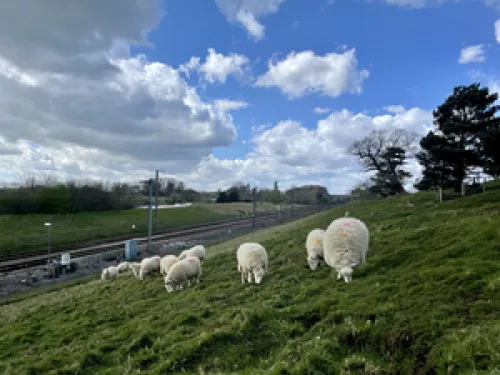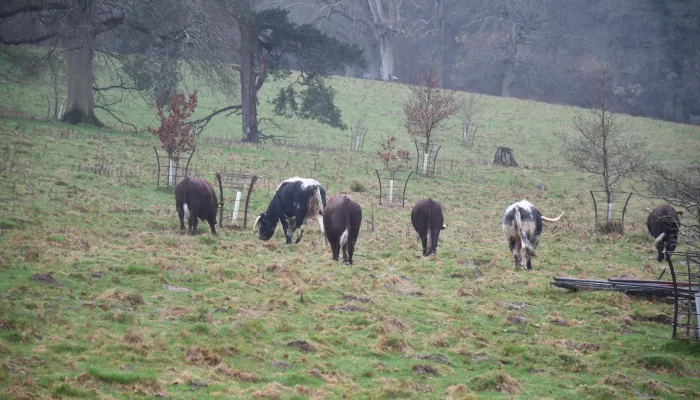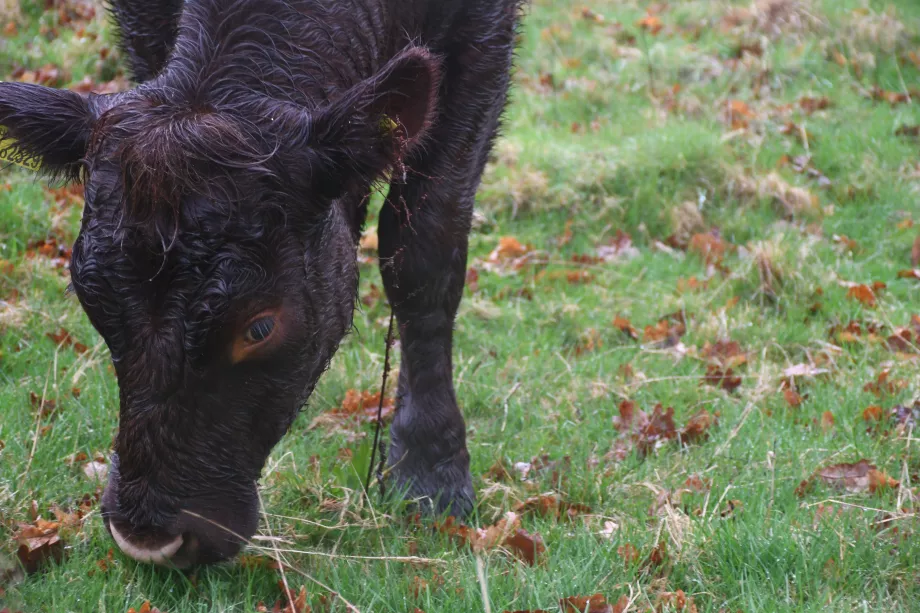
Surprise late lambs for Ewe who lost early pregnancy in dog attack
Livestock checkers at Chilston Ponds and Pines had a welcome surprise when they were greeted by a pair of unexpected new lambs.


Area Manager for Kent Wildlife Trust, Alison Ruyter who leads the Wilder Grazing programme said: “Sussex cattle have the exceptional ability to clear reeds, willow, young scrub, and bramble. They are renowned for their calm temperament and work together to look out for each other, even taking it in turns to look after the calves whilst others sleep and forage. It is not unusual to see one female happily feeding multiple young from the herd, they are an incredibly social unit.
“This is the perfect environment for the herd to thrive and I believe they will make a significant contribution, boosting biodiversity as they go about their usual business. I hope that visitors will enjoy seeing them and that those who are enjoying the dog-friendly nature of the site keep their pet on a lead around all livestock grazing there.”
Rebecca Rees, General Manager at Scotney Castle said: “We are thrilled to be working with the Kent Wildlife Trust on this initiative here at Scotney. The diverse features of the 780-acre estate at Scotney makes it a haven for wildlife and our ambition is to help it thrive. Conservation grazing on the SSSI will result in an increase of habitat that supports the native wildlife of Kent. It also continues the heritage of traditional breeds as part of a working estate.”
Kent Wildlife Trust has over 800 cattle, sheep, ponies, pigs, and a herd of bison roaming across many of the 90 nature reserves under their management as part of their “Wilder Grazing Strategy.” The animals manage the landscape naturally, encouraging wildlife recovery and adaptation to the changing climate. Staff at Kent Wildlife Trust utilise mixes of old breeds of grazing, browsing and rootling animals across all habitats to mimic natural processes. The grazing species on the reserves act in similar ways to the large grazers that used to live wild in Kent but are now extinct, such as aurochs, elks, and the Steppe bison.
The animals in the care of the trust are checked daily by a group of volunteers, wardens, and Conservation Grazing Rangers. They look out for any welfare issues, reporting back lameness, illness, broken fences, and site safety issues.
Inquiries Sally Smith: press@kentwildlife.org.uk Mob: 07376 445567
Images and footage can be downloaded here.
About Kent Wildlife Trust: Kent Wildlife Trust is the county’s leading conservation charity with more than 31,000 members and over 1000 registered volunteers. We manage and protect over 9000 acres of land across more than 90 different sites and nature reserves, alongside 3 visitor centres.
We work closely with local communities, landowners, and partners to protect and improve habitats in the countryside, coast, and town for the benefit of the wildlife and people of Kent.
The charity also campaigns against inappropriate and damaging development; and educates and inspire young people to help secure a more sustainable future and create a Wilder Kent.

Livestock checkers at Chilston Ponds and Pines had a welcome surprise when they were greeted by a pair of unexpected new lambs.